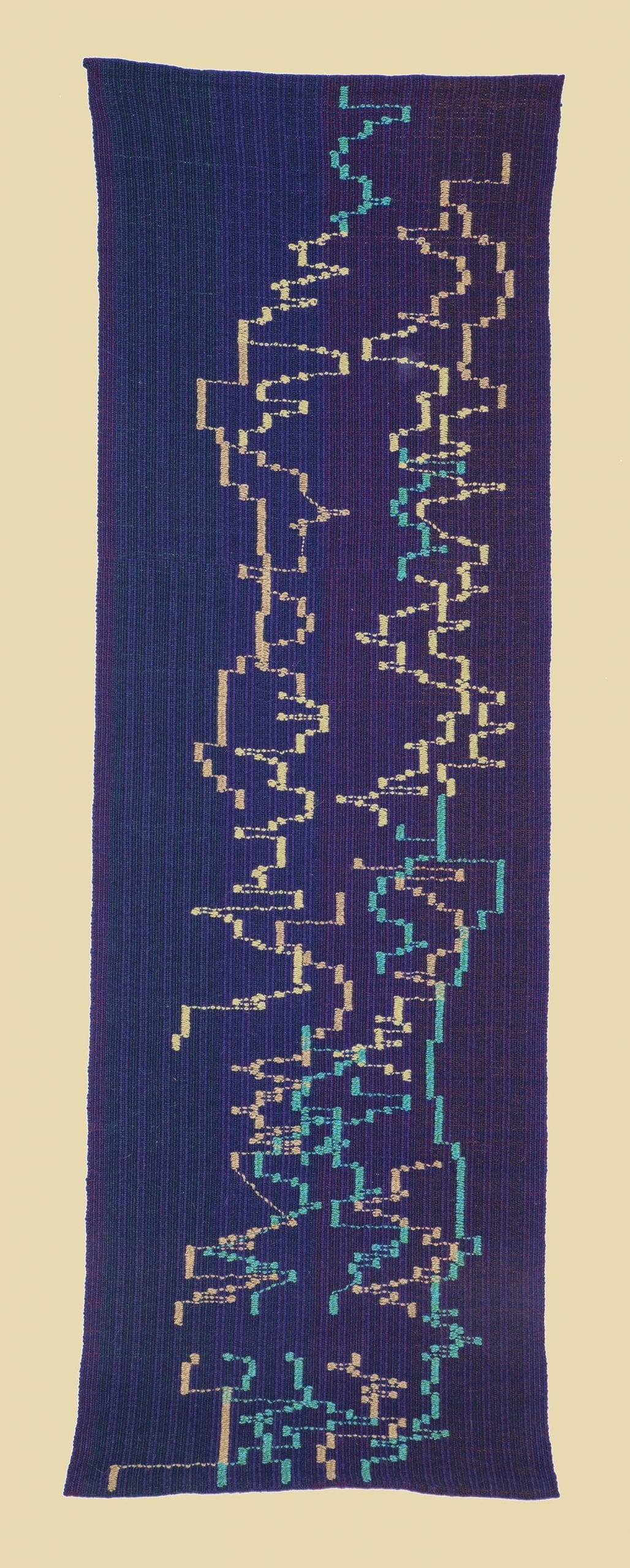Contrapunctus 7
Interested in purchasing “Contrapunctus 7”? Contact the artist here.
“Contrapunctus- 7” is the third stretto fugue .It is a galaxy of the themes spinning at various augmented variations. But that is one half of the story. The other half is the same treatment is applied to the inversion of the theme- and simultaneously. This is Bach functioning at his best, inventive skills. There is much overlapping but all the while the theme and its inversion are there, always coming round. Samuel Baron told me he always saw a solar system with planets all circling at different speeds.
In weaving this fugue, it felt more like a galaxy. It always seemed like I had hundreds of “sparkly stars” to thread into place. What is interesting about this stretto summary, besides its complexity, is how it points to the next sections of fugues. The combination of rectus and inversus themes t0gether is central to the mirror fugues later. The use of augmented versions of themes sets the stage for the double and triple fugues that follow. This was an insight gained only in retrospect as the complete set of of panels was reviewed once they were photographed.
I have to mention another technical point . All the weaving for each fugue was done from end to beginning. This means the first notes woven in are the last notes heard and the last note woven is the first note heard at the beginning. This also means the eventual appearance of the fugue was carefully planned out prior to weaving production.
Interested in purchasing “Contrapunctus 7”? Contact the artist here.
“Contrapunctus- 7” is the third stretto fugue .It is a galaxy of the themes spinning at various augmented variations. But that is one half of the story. The other half is the same treatment is applied to the inversion of the theme- and simultaneously. This is Bach functioning at his best, inventive skills. There is much overlapping but all the while the theme and its inversion are there, always coming round. Samuel Baron told me he always saw a solar system with planets all circling at different speeds.
In weaving this fugue, it felt more like a galaxy. It always seemed like I had hundreds of “sparkly stars” to thread into place. What is interesting about this stretto summary, besides its complexity, is how it points to the next sections of fugues. The combination of rectus and inversus themes t0gether is central to the mirror fugues later. The use of augmented versions of themes sets the stage for the double and triple fugues that follow. This was an insight gained only in retrospect as the complete set of of panels was reviewed once they were photographed.
I have to mention another technical point . All the weaving for each fugue was done from end to beginning. This means the first notes woven in are the last notes heard and the last note woven is the first note heard at the beginning. This also means the eventual appearance of the fugue was carefully planned out prior to weaving production.
